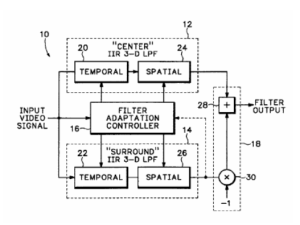An Adaptable Human Vision Model for Subjective Vide’o Quality Rating Prediction Among CIF, SD, HD and E-Cinema

A new highly adaptable model for predicting human vision response is presented for enabling an improved method of predicting subjective video quality. The ability to adapt enables comparison of video with dissimilar image sizes, viewing environments, frame rates, video quality classes, etc. (for example HD vs. SD vs. CIF). Model test results are compared with human response. Responses are from stimuli covering both JND (just noticeable differences) and supra-threshold (extending to near the opposite extreme). Supra-threshold responses compared include adaptation behavior exemplified by nonlinear response responsible for significant sensitivity changes, masking and visual illusions. Given the prediction of visible impairments, simulation of the contextual adaptation that occurs during the training portion of ITU-R BT.500 (subjective assessment methodology) is used for predicting DMOS.
